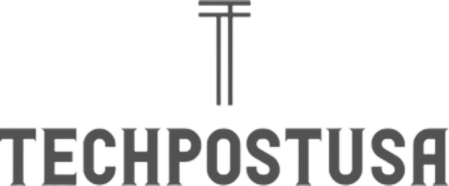Optimizing SOC with Security Automation and Orchestration (SOAR) Tools
Current challenges in cybersecurity are overwhelming. Security Operations Centers (SOCs) balance an outpouring of alerts, heightening threats, and diminishing response times with limited resources. SOC analysts are already exhausted, and it is clear that traditional approaches to SOC operations, even with managed SOC services, cannot keep pace.
With the introduction of Security Orchestration, Automation, and Response (SOAR) tools, organizations have begun to embrace SOC automation, improve efficiency, and deal with evolving threats head-on.
In this blog, we discuss the impact SOAR in cybersecurity has on the SOC landscape, explain the importance of security workflow automation, and offer guidance on optimizing your SOC with these tools.
Why SOCs Need a Makeover
SOC teams are impacted by several simultaneous challenges:
A deluge of alerts from disparate systems Numerous attack vectors A dearth of skilled cybersecurity personnel Soaring expectations for rapid incident response Too many SOCs continue to rely on manual workflows. SOC analysts are often encumbered with monotonous processes, false positive triage, and tool switching—all of which can lead to burnout and mounting missed opportunities.
SOAR tools have enabled SOC automation, and while some fear job elimination, the reality is the focus of SOC analysts will now be what truly matters.
SOAR in Cybersecurity Explained
As security tools evolve, SOAR (Security Orchestration, Automation, and Response) classifies them as enhancements to streamline and bolster security operations. Precisely, SOAR integrates three specific functions:
- Orchestration – Synchronizes multiple security tools and data sets to promote harmony.
- Automation – Carries out repetitive and tedious processes without human intervention.
- Response – Gives capabilities for controlled, semi-automated, or full automated execution of incident response.
In the context of mobile cybersecurity, SOAR allows SOCs to streamline the investigation, triage, and response processes, enabling them to complete tasks faster and with more precision.
How SOAR Enhances SOC Automation
Let us highlight how SOAR assists in optimizing SOC automation and security operations:
- Alert Enrichment
In the case a new alert is generated, SOAR tools can automatically fetch internal and external contextual information, such as threat intel feeds, user profile data, and endpoint data. Analysts can therefore receive a comprehensive view without much work.
- Playbook Execution
SOAR platforms facilitate workflows (also referred to as “playbooks”) that have been defined in advance for various incident scenarios. These may include phishing, malware, and insider threats. Those playbooks can automate all tasks from alert triage down to containment, minimizing time to respond and increasing efficiency.
- Automated Triage
A false positive will always be time-consuming. SOAR tools have the capability to look at IP address, user behavior, and other aspects of the history to either auto-dismiss alerts or escalate them to the proper level.
- Incident Escalation and Assignment
With security workflow automation, assigning incidents for specific tiers can be accomplished automatically based on category and severity. This will help alleviate mix-ups and achieve better coordinated response times.
- Audit and Reporting
Breach analysis SOPs reporting ss are easier and more compliant because every action taken through a SOAR platform is time-stamped. The compliance audit won and the analyst case work files did not have to be assembled manually.
Real World Example Phishing Email Response
Imagine your SOC receives on average 50 phishing alerts every day.
Without automation:
- An analyst checks the reputation of the sender and
- Opens the email headers
- Checks the links included for embedding
- Documents the results
- Identifies and notifies IT for isolating a user if required
That is 30-40 minutes on average per alert.
With SOAR in cybersecurity:
- A playbook checks sender domain and reputation automatically.
- It parses the email headers.
- Attachment is sandboxed.
- Users and IT are notified.
- Only confirms escalation if malicious activity occurs.
All of the above can be accomplished in less than 5 minutes and all most no involvement from the analyst. Now that’s SOC automation in action.
The Key Benefits of Security Workflow Automation
Aside from saving time, automated security workflows offer other notable benefits.
Automation ensures policies are followed by minimizing human blunders due to automated completion of tasks in a set manner. Employees’ policy adherence and automation-controlled workflows align seamlessly through minimization of policies’ failure risks.
Maintained Standards
Checks and balances performed throughout set periods uphold policy compliance and law observance. Structured policy-driven procedures boost operational permit compliance.
SPEED
Controlled task execution protects timers tracked during the detection and response periods. MTTD and MTTR are cut down significantly through immediate action.
SCALABILITY
Automation boosts productivity by increasing response coverage without the need to employ more personnel or assets.
ANALYST EMPOWERMENT
Strategic course alteration and in-depth analysis are rewarding and enjoyable processes after completing simple mundane tasks. Less workload left post-automation allows for more time and focus to be channeled into the appealing complex missions.
Analyst empowerment boosts satisfaction and course engagement increases as trust builds post-automation increase.
Challenges and Considerations
Of course, no solution is perfect. Successfully implementing SOAR requires careful planning and commitment:
- Playbook Design: Poorly designed workflows can lead to missed steps or improper escalation.
- Tool Integration: SOAR is only as good as its connections to your other tools (SIEM, EDR, ticketing, etc.).
- False Sense of Security: Automation doesn’t mean “set it and forget it.” Human oversight is still critical.
- Change Management: Teams may resist change, especially if processes are deeply ingrained.
Start small—automate well-defined, low-risk tasks first. As confidence and competence grow, expand automation across more complex workflows.
Constructing a Business Case for SOAR
Gaining the attention of top management to invest in SOAR tools needs to clear a few hurdles, one of which is explaining the technical merits in a monetary angle:
- Less response time = Lower impact of breaches
- Greater SOC headcount = more ROI on workforce spending
- Better adherence to policy = Lower probability of sanctions, loss of reputation, or damages
- Analysts that are more focused = Better retention and decreased turnover
Strategically focus on SOAR as a cyber resilient technology enabler rather than a mere tech enhancement.
How to Choose the Right SOAR Platform
The right SOAR tool for your organization will depend on:
- Integration possibilities – Will it align with your existing technology stack?
- User-friendliness – Are analysts able to personalize, manage, and navigate playbooks?
- Growth potential – Will it align with the organization’s expanding preferences?
- Vendor support and marketplace – Is assistance easily accessible?
Prominent SOAR platforms include Palo Alto Networks Cortex XSOAR, IBM Security QRadar SOAR, Splunk SOAR, and Swimlane.
Final Thoughts: Begin Automating Immediately
If alerts continue to pour in, and managing them seem to be an endless cycle of hope juxtaposed with no enhancement, it is time to switch to SOC automation using the SOAR approach. SOAR in cybersecurity transforms burdening tasks into effortless ones—enabling your staff to operate at unprecedented speeds and with pinpoint accuracy.
Avoid trying to achieve complete autonomy all at once; start off small. Focus on automating repetitive, simple, and time-consuming tasks that bog down analysts. From there, build momentum and refine workflows which enable scaling as your business becomes more comfortable.




